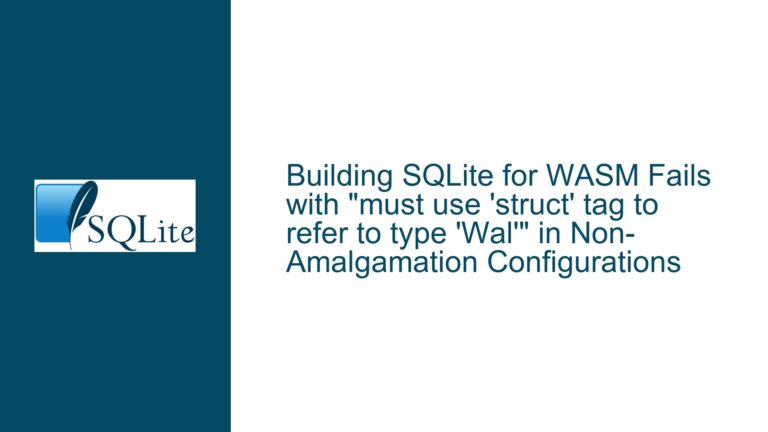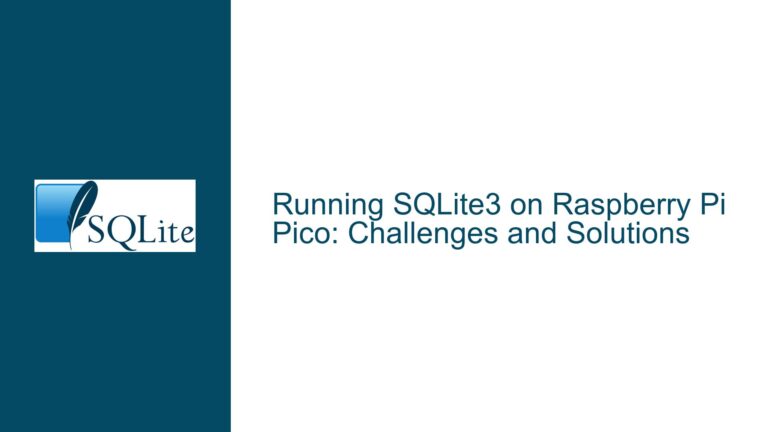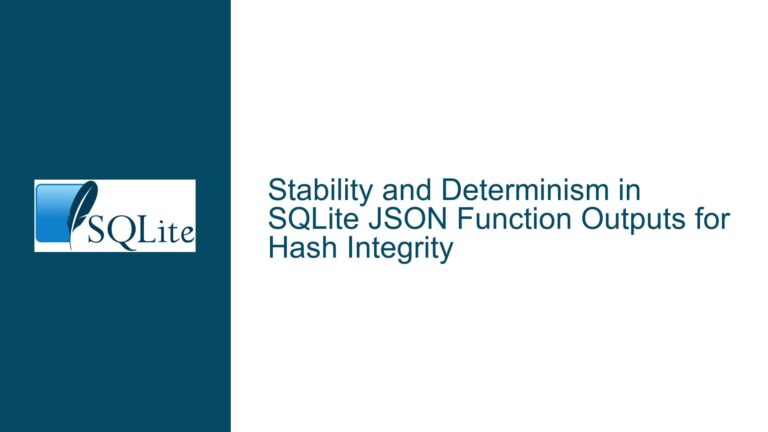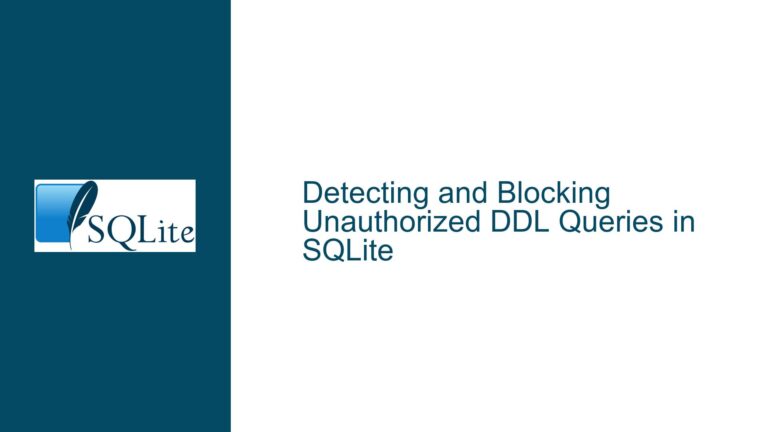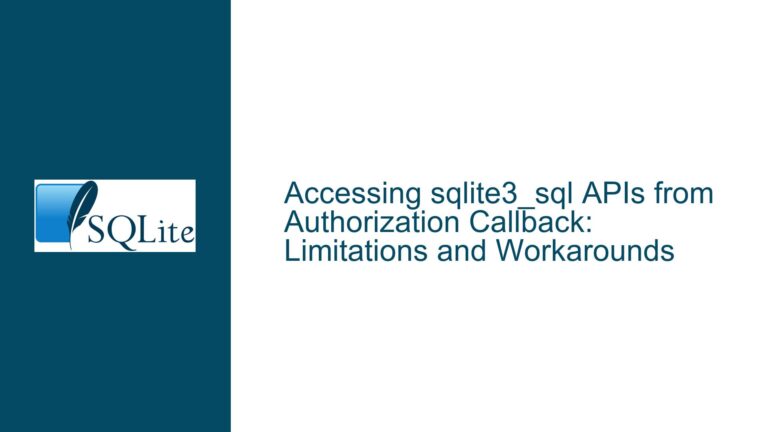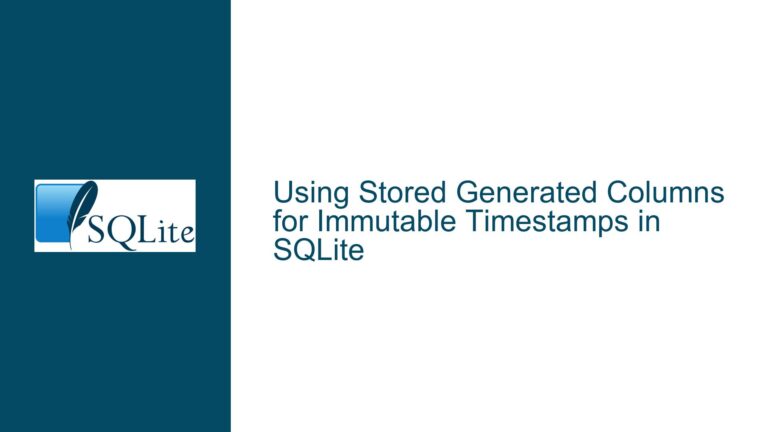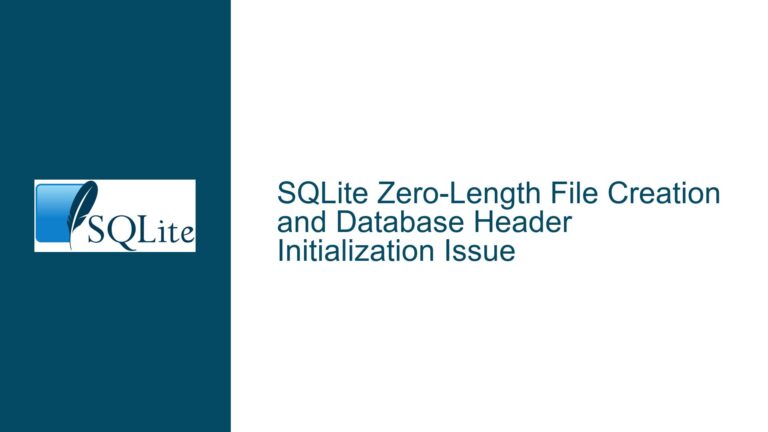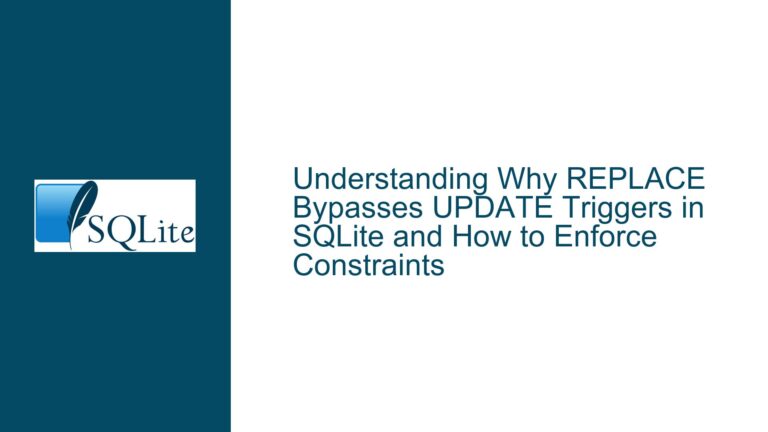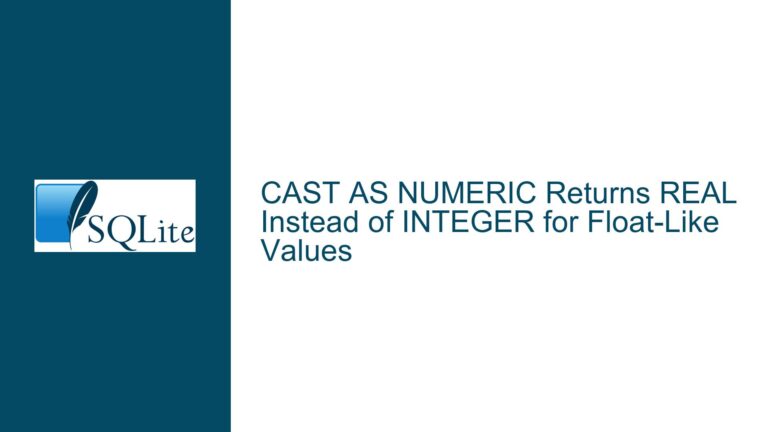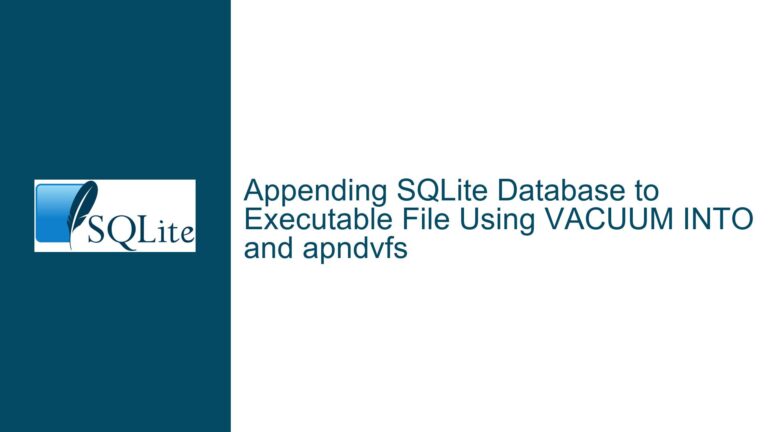Building SQLite for WASM Fails with “must use ‘struct’ tag to refer to type ‘Wal'” in Non-Amalgamation Configurations
Compilation Error Due to Missing Type Declaration in WAL Module Issue Overview A compilation error occurs when building SQLite for WebAssembly (WASM) with the –enable-amalgamation=no flag, specifically in the Write-Ahead Logging (WAL) module. The error manifests as: /projects/sqlite/repo/bld/../src/wal.c:747:3: error: must use ‘struct’ tag to refer to type ‘Wal’ 747 | Wal *pWal, /* The WAL…
